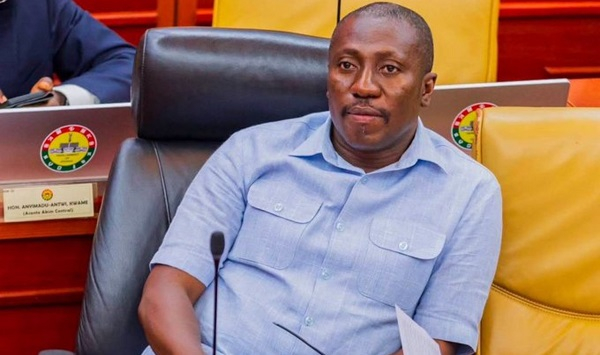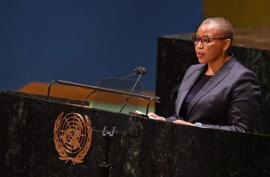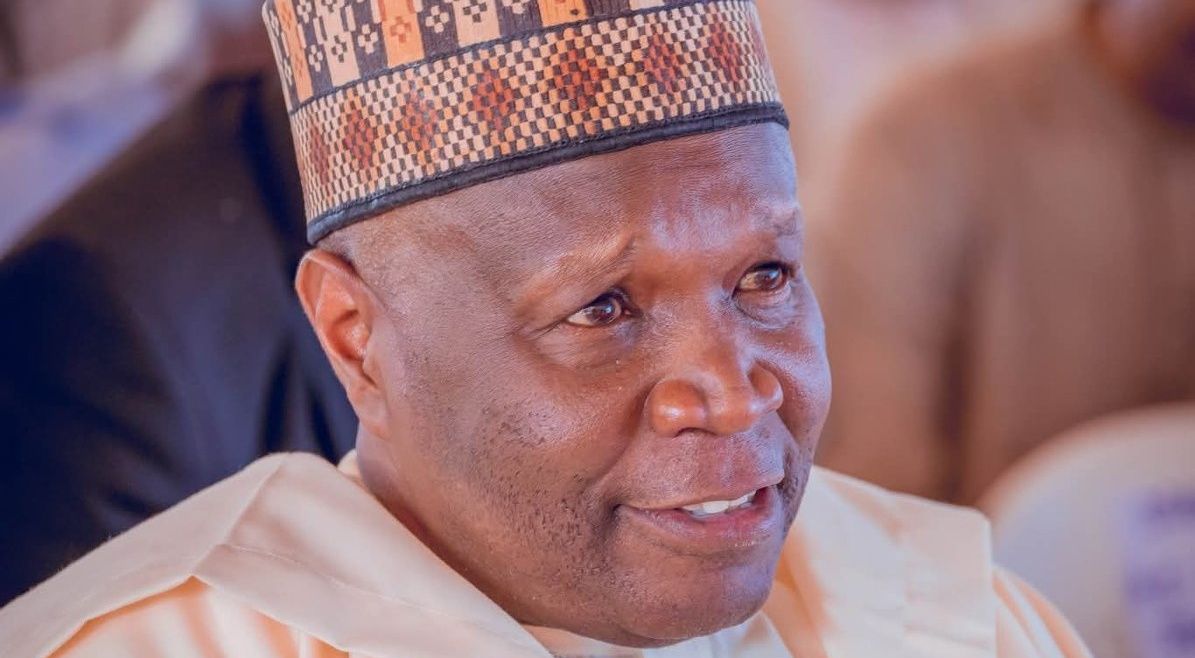Top Ten Videos - June 9, 2025
China is actively working to internationalize the yuan and establish it as a dominant global currency potentially backed by gold, in response to rising economic risks in the U.S. and a broader shift among Eastern nations towards valuing gold over fiat currencies.
China has accumulated , with an additional taken from Shanghai Gold Exchange vaults by Chinese nationals since its opening, as part of a strategy to and potentially back it with gold.
China’s gold accumulation is driven by its , viewing capitalism as a to state control, and the belief that Western fiat currencies will eventually go to .
The Chinese Communist Party aims to as the global reserve currency through substantial gold accumulation and control of the global gold market.
The US bond market is , with rising interest rates failing to offset growing credit risks, especially for foreign investors, according to .
The has surpassed that of for the first time in a long time, indicating underlying issues in the Western financial credit-based system.
and misleading published by the US government about real credit costs and currency devaluation are misleading foreign investors.
Contrary to some beliefs, possess significant gold reserves, but the geopolitical situation is a major concern, with Europeans described as without American leadership.
The potential through is a significant worry, with Europeans potentially drifting into .
would likely the introduction of , which would require .
The Bank of England’s white paper suggests CBDCs would take a and would delegate direct accounts with the central bank to commercial banks.
Gold remains , while everything else, including government bonds and CBDCs, is simply credit or political control in disguise, emphasizing the importance of physical gold for wealth preservation.
Silver prices are expected to rise significantly over the next 5 to 10 years due to a declining dollar, shifting investment strategies, and increasing demand driven by economic and technological changes.
The shows in the dollar’s value, alternating between since the .
has outperformed the over the last , with showing even stronger performance.
have reduced their from to less than of their balance sheets.
performance has decoupled from , with investors selling and buying gold following the .
is experiencing its , with a market exceeding .
is expected to participate significantly in the next due to in the mining industry and .
are purchasing more than officially reported, with a significant between and .
The is likely participating in gold purchases, with former hedge fund manager (now ) having gold as his largest position.
are poised for when the and are capped.
, , and large institutions have minimal exposure to , , , , and , presenting potential investment opportunities.
Elon Musk and lawmakers criticize the “Big Beautiful Budget” for being a wasteful, debt-inducing proposal that postpones necessary spending cuts while increasing the deficit, urging for urgent reforms and a shift towards more conservative fiscal policies.
The “Big Beautiful Budget” is projected to increase the deficit by , potentially raising annual deficits to and .
The bill includes a , the largest ever, while bundling it with the budget to limit future Congressional leverage for spending cuts.
The budget includes for the , which has not passed an audit in .
Some senators propose reducing , eliminating , and repealing .
The bill is expected to worsen in the Senate, with .
Trump’s presidency is marked by economic chaos, rising disillusionment among supporters, and potential consequences from both domestic and international tensions, raising questions about his ability to govern effectively.
Trump’s is primarily driven by , focusing on and rather than consumer goods.
The implementation of and under Trump’s administration is creating and for businesses, potentially leading to a reduced for average Americans.
The integration of the , a privatized , into the US database raises concerns about and the potential for a .
The involving highlights the need for and in academia, particularly in research ethics.
The , where a student was sanctioned for criticizing (3,000 administrators for 11,500 students), underscores the need for in higher education.
A potential looms due to an , a precarious , and a burdened by debt.
The passage of the in granted women voting rights, but the concept of has evolved significantly since election in with only of the adult population eligible to vote.
The interpretation of the in the US Constitution led to the expansion of government power, including the creation of and the .
The in was a pivotal moment in World War II, where Japan’s loss of and their best planes and pilots significantly altered the course of the war.
The in , which saved , was crucial in preventing a potentially war-altering capture by German forces.
Great Britain is intensifying its involvement in the Ukraine conflict as a means to distract from domestic issues and economic challenges, while also navigating complex geopolitical dynamics involving NATO, the US, and emerging global powers like China.
has been the main instigator of the Ukraine-Russia conflict through , a covert operation involving to maintain Ukraine’s resistance and erode Russia’s legitimacy.
The recent attack on Russia’s nuclear bombers was allegedly , aiming to provoke a response that could invoke .
British secret services are reportedly from Russian attacks in Ukraine to potentially stage a in London, justifying Western intervention.
Central banks are secretly in preparation for an anticipated economic crash.
China’s aims to create an alternative global economic system promoting for all nations, challenging the Western colonial system.
The UK is allegedly escalating the Ukraine conflict to , including potential civil unrest and economic collapse.
The US government is reportedly planning a with a dual currency approach to address hyperinflation and implement capital controls.
The US opposition to “Project Ukraine” is more widespread than publicly known, with many viewing it as and primarily benefiting Britain and Europe.
The , worth , could significantly impact gold prices if increased.
Building local community networks and relationships is crucial for in times of crisis, as authorities allegedly aim to prevent such organization.
Consumer sentiment is sharply declining due to economic concerns, inflation fears, and market uncertainty, prompting cautious investment strategies despite some positive economic indicators.
Consumer sentiment has sharply declined for in 2025, driven by concerns over and , particularly among who generate the .
Historically, has preceded a within months, while indicates economic growth, a pattern observed since the .
of consumers expect unemployment to rise, leading to a across all income levels, with expectations of over the next five years up substantially in the last six months.
Consumers are planning to on items with high price increases, contrasting with the pandemic period when many maintained spending due to and .
, particularly , is making it , which consumers recognize and are bracing for impact, expecting as a result.
In 2025, consumer sentiment has rapidly eroded across all political groups (, , ) and economic dimensions, with mentioning and as causes for anxiety.
Stabilizing trade policy by holding tariffs steady while negotiating for months or a year could help improve consumer views, as constant changes give consumers and make them feel they can’t plan.
, like the , are preferred over qualitative measures for providing more reliable signals of market extremes and potential reversals.
in the US are extreme by historical standards, with and reliable indicators like the and at levels seen only at the and .
are favored over US stocks due to better valuations and stronger momentum, with guiding allocation despite negative US market sentiment.
improves forecasting accuracy of economic trends but should be used alongside for a complete picture, as both are needed to anticipate trends.
A potential could occur if hard data risks materialize, potentially leading to a .
, especially and , are strong alternative assets amid fiscal concerns, with gold recently breaking out of a .
is crucial, as humans struggle with and often misjudge probabilities, making that can lead to suboptimal outcomes without a .
Gold and Bitcoin are becoming essential inflation hedges as the U.S. faces challenges in its bond market and rising monetary inflation, while concerns about losing its safe-haven status are overstated.
In a , investors should prioritize over bonds due to their significant price appreciation potential.
The , with rising yields and term premiums driven by such as increased issuance in Germany, France, and Japan, and a shift in the .
are monetizing government debt by buying short-dated Treasury bills, expanding their balance sheets and causing , as banks prefer short-dated debt and governments increasingly rely on them for funding.
are rising as , breaking from traditional correlations with real interest rates, as global liquidity imbalances and inflationary pressures persist in the US, Japan, and China.
In a , owning like gold, Bitcoin, and large-cap stocks with pricing power is crucial for protection and outperformance, as global liquidity imbalances and inflationary pressures escalate.
has increased since 2000, matching the in US debt, demonstrating its role as a monetary inflation hedge, while Bitcoin has outperformed even more.
The indicates that if debt grows at , liquidity will also grow at that rate, driving monetary inflation and necessitating dedicated inflation hedges.
occur when the is high, causing refinancing issues, while form when there is too much liquidity relative to debt, as seen in historical examples like the Japan and Y2K bubbles.
and tight monetary policy have recently changed due to a and tariff concerns, leading to huge liquidity injections by the People’s Bank of China, with crypto demand surging as a hedge against instability.
is increasing as the US cannot rely on international buyers like China and Japan due to , with funding coming increasingly from hedge funds in financial centers like London and Cayman.
The is now more concerned about than economic growth, as shown by the disconnect between US GDP momentum and interest rate cut expectations, marking a significant policy shift.
The notion of Federal Reserve independence is a myth, as it is significantly influenced by political pressures and has historically prioritized government financing over true autonomy in monetary policy.
The Federal Reserve has of political pressures, with officials appointed by the President and subject to changing political whims.
A exists between the Treasury and the Fed, with no significant socioeconomic barriers between officials.
The current administration’s relationship with Fed Chair Powell is described as , involving scapegoating and blame-shifting for economic outcomes.
During , the Fed’s primary objective was to by purchasing government debt with newly printed money.
The established the Fed’s independence, but it was a gradual process over a decade rather than an immediate change.
The Fed’s behavior during was indirect, focusing on to increase liquidity.
A by economist Winrob found that the is the president’s economic objectives, not Fed independence.
After the , interest rates became a poor indicator of Fed independence or dependence.
The were not a sign of Fed independence, but rather continued dependence on the Treasury.
The appointment of William McChesney Martin as Fed chair by the Truman administration, despite being seen as a move towards independence, was actually a sign of .
Historian Jonathan Newman argues that the Fed’s independence is a , with the president always having the upper hand in monetary policy.
Summary
The global economic landscape is shifting towards protectionism and nationalism, revealing vulnerabilities in both the U.S. and China, with the U.S. maintaining relative stability and dominance despite its challenges.
are engaged in a complex economic struggle, with and reshaping the global order and potentially causing for long-term national interests.
China’s economy faces significant challenges, including , , and a over – more than the size of the entire .
The in global finance gives America significant leverage, as it can control and , potentially cutting off China’s access to crucial for servicing its .
China’s , , and are experiencing dramatic downturns, with pushing prices down and investors seeking safe havens like to hedge against the .
Despite low 10-year Treasury yields of 1.5%, 96-97% of Chinese debt is owned domestically, indicating a lack of confidence in other assets and potential economic instability.
China’s Belt and Road Initiative, aimed at reducing reliance on US/Europe by building new consumer bases and alliances, faces uncertainty in its effectiveness and long-term impact.
Reshoring industries in the US is seen as necessary for national security but requires addressing existing domestic problems and may cause economic disruption.
Political turnover every 2-4 years in the US may hinder long-term economic strategies, contrasting with China’s more stable political system.
Trump’s tariffs, aimed at bringing manufacturing back to the US, are attempts to address long-standing issues of inequality, low-paying jobs, and loss of purchasing power for Main Street.
Volatility spikes and trade wars can cause significant market movements, as evidenced by massive outflows from US assets in April 2025, followed by one of the biggest inflows in history in May.
Gold is considered a cornerstone of every portfolio, while US equities are viewed as best for global growth scenarios.
Governments historically blame foreigners for economic crises, an age-old strategy now employed in framing current US-China economic tensions.
Future scenarios may include limited global liquidity, potential US growth based on dollar liquidity alone, and the possibility of QE limited to US institutions, potentially leading to US growth while the rest of the world struggles.











